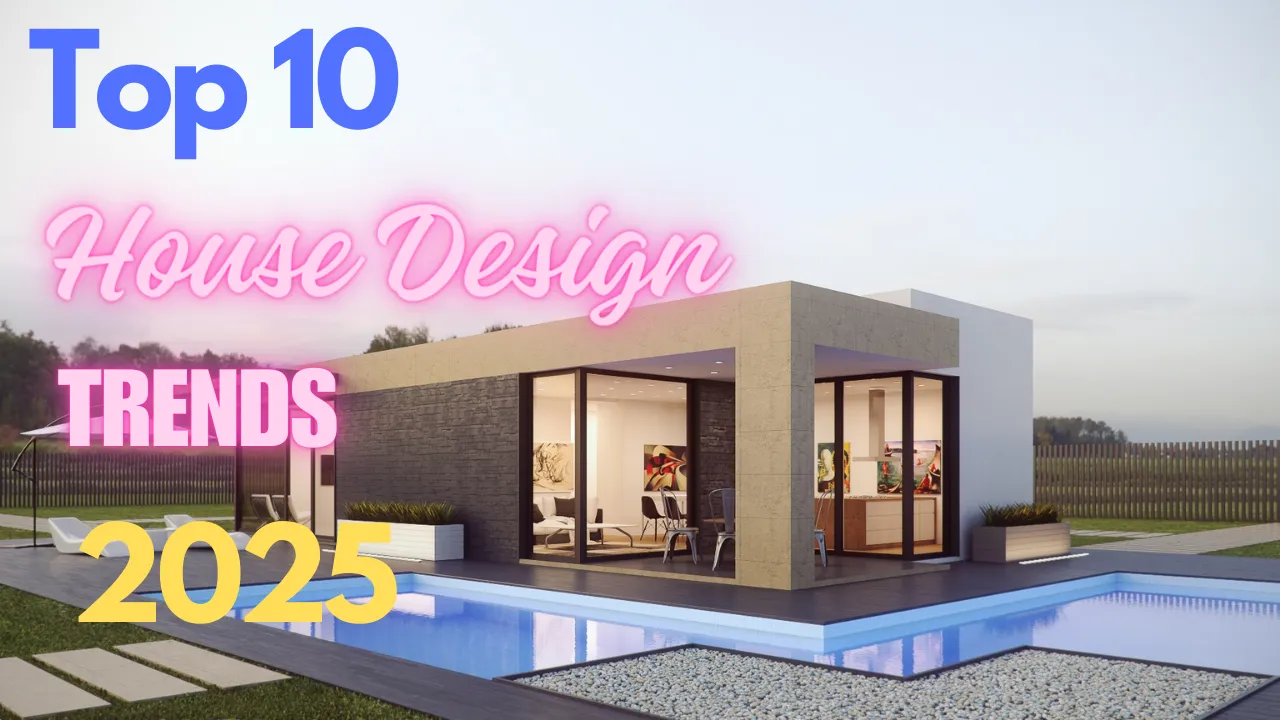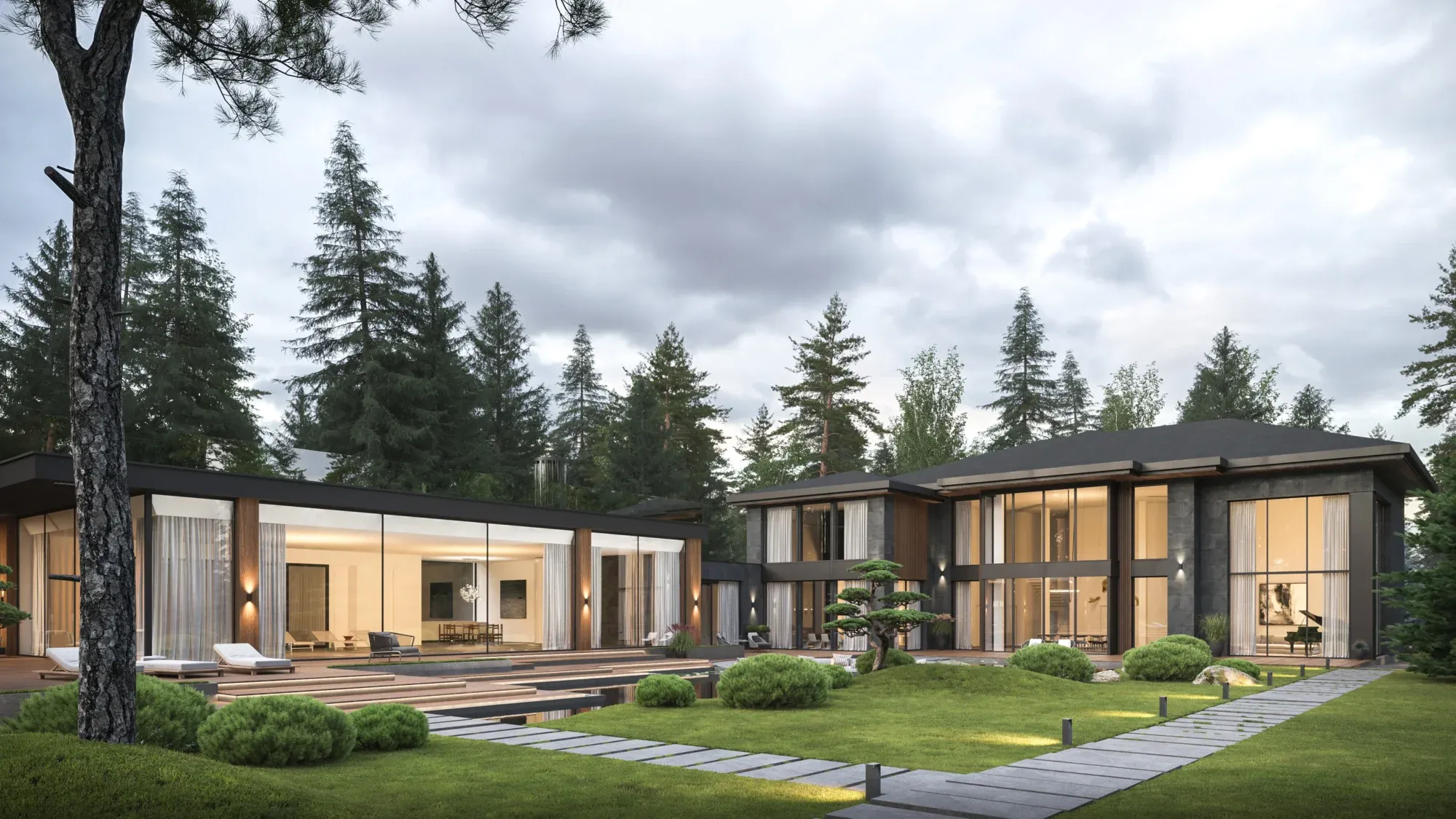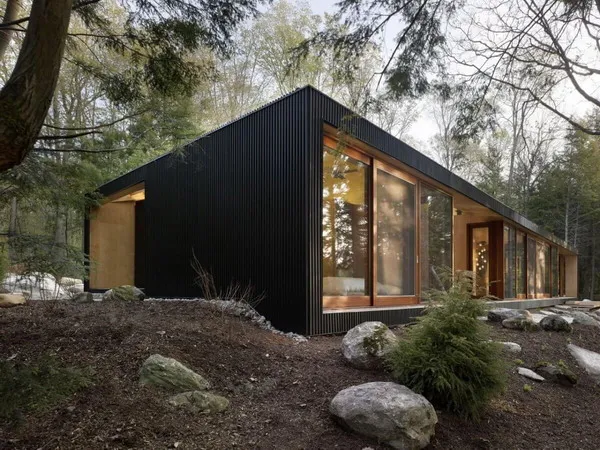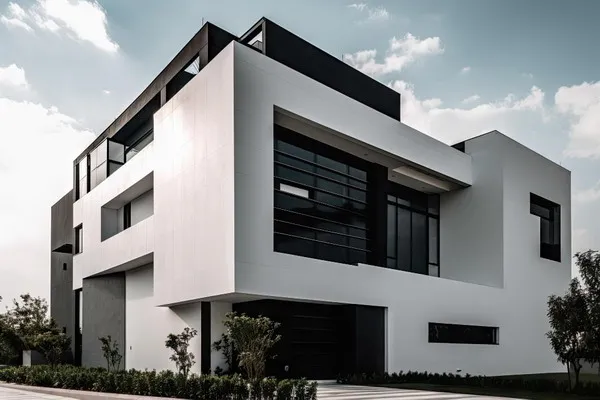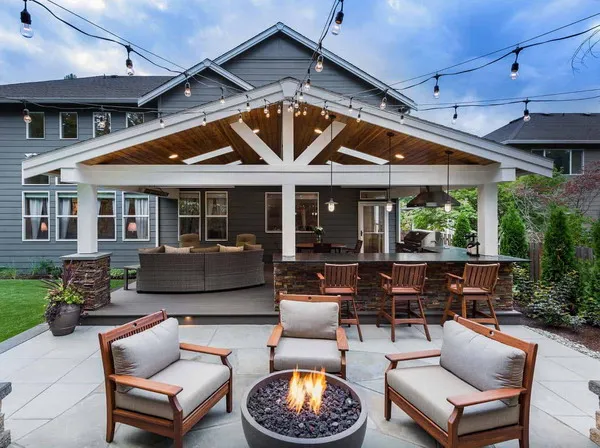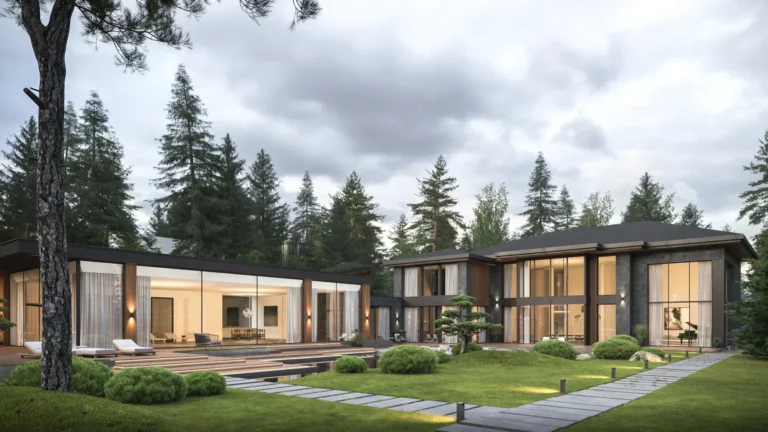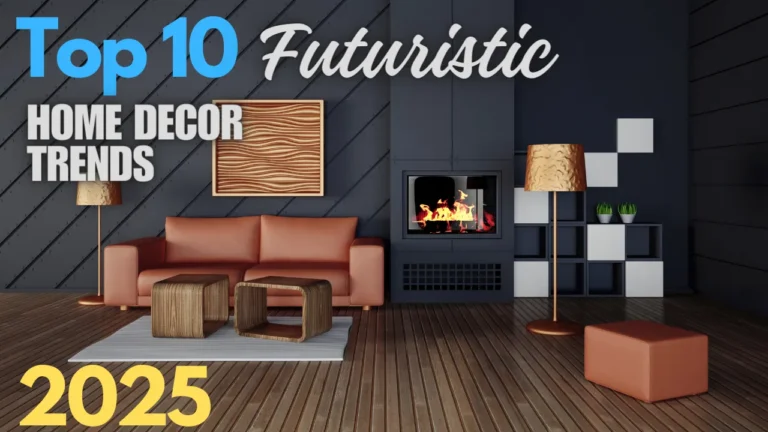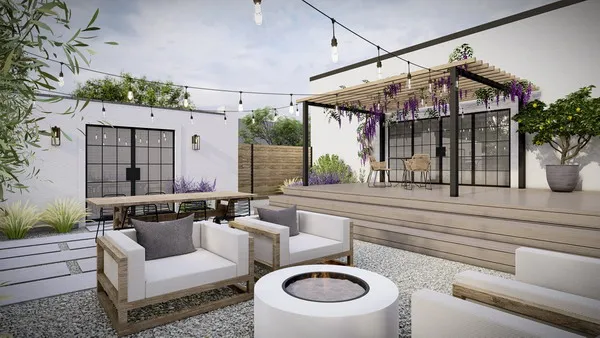Top 10 House Design Trends 2025
Last Updated on July 16, 2024 by Mutiara
The world of house design is constantly evolving, reflecting changes in technology, lifestyle, and environmental awareness. As we approach 2025, several trends are emerging that promise to shape the way we live and interact with our spaces. These trends not only highlight aesthetic preferences but also focus on sustainability, functionality, and the integration of modern technology. In this article, we’ll explore the top 10 house design trends of 2025, offering insights into how you can incorporate these ideas into your own living spaces.
Trend 1: Sustainable and Eco-Friendly Materials
Sustainability has become a cornerstone of modern house design. As environmental concerns continue to grow, more homeowners and designers are prioritizing the use of eco-friendly materials. Sustainable materials like bamboo, recycled metal, and reclaimed wood are becoming increasingly popular due to their low environmental impact and renewable nature.
Bamboo is celebrated for its rapid growth and durability, making it an excellent alternative to traditional hardwood. Recycled metals and reclaimed wood not only reduce waste but also add unique character and history to a house. These materials are often used in flooring, furniture, and structural elements, providing a sustainable and stylish solution for modern living.
The benefits of using sustainable materials extend beyond environmental impact. These materials often have a longer lifespan and require less maintenance, ultimately saving homeowners money and resources. Additionally, eco-friendly designs can improve indoor air quality by reducing the presence of harmful chemicals found in many conventional building materials.
Trend 2: Smart House Technology Integration
The integration of smart technology into house design is no longer a futuristic concept—it’s becoming a standard expectation. Smart house technology enhances convenience, security, and energy efficiency, making everyday life easier and more enjoyable.
Key features of smart houses include voice-activated systems, smart lighting, automated security, and intelligent climate control. Voice assistants like Amazon Alexa and Google Home allow homeowners to control various aspects of their house with simple voice commands. Smart lighting systems can be programmed to adjust based on time of day or occupancy, reducing energy consumption and creating the perfect ambiance.
Automated security systems, including smart locks and surveillance cameras, provide peace of mind by allowing homeowners to monitor and control their house’s security from anywhere. Intelligent climate control systems, such as smart thermostats, learn household patterns and adjust temperatures accordingly, optimizing energy use and enhancing comfort.
The impact of smart technology on house design extends to energy efficiency. Smart appliances and systems can significantly reduce energy consumption, lowering utility bills and minimizing environmental impact. As technology continues to advance, the possibilities for smart house integration are virtually limitless.
Trend 3: Minimalist Aesthetic
The minimalist aesthetic remains a dominant trend in house design, emphasizing simplicity, functionality, and the beauty of clean lines. Minimalism encourages a clutter-free environment, promoting a sense of calm and order in the house.
Key principles of minimalist design include the use of neutral colors, open spaces, and a focus on essential elements. Neutral color palettes, such as whites, grays, and earthy tones, create a serene and timeless backdrop that allows other design features to shine. Open spaces and unobstructed views enhance the sense of spaciousness and flow within the house.
Minimalist design also prioritizes functionality. Furniture and decor are chosen for their practical use as well as their aesthetic appeal. This approach leads to a more intentional and thoughtful use of space, where every item serves a purpose and contributes to the overall harmony of the house.
Trend 4: Biophilic Design
Biophilic design is all about bringing the outside in, fostering a connection with nature within the built environment. This trend emphasizes the incorporation of natural elements such as indoor plants, natural light, and water features to create a soothing and invigorating living space.
Indoor plants are a cornerstone of biophilic design, adding color, texture, and life to interior spaces. They also improve air quality by filtering pollutants and releasing oxygen. Natural light is another critical element, with large windows and skylights used to maximize daylight exposure and create a bright, uplifting atmosphere.
Water features, such as indoor fountains or aquariums, can also enhance the biophilic design by introducing the calming sounds and visual appeal of water. These elements contribute to a sense of tranquility and well-being, making the house feel more connected to the natural world.
The benefits of biophilic design extend to mental and physical health. Studies have shown that exposure to nature can reduce stress, improve mood, and enhance cognitive function. By integrating natural elements into house design, homeowners can create a space that supports their overall well-being.
Trend 5: Multi-Functional Spaces
As our lifestyles become more dynamic and multifaceted, the need for versatile living spaces has grown. Multi-functional spaces are designed to accommodate various activities and purposes, making the most of available square footage.
One of the most common examples of multi-functional spaces is the home office. With the rise of remote work, having a dedicated workspace within the house has become essential. However, these spaces often serve multiple purposes, such as a guest room or a study area for children.
Hybrid living-dining spaces are another popular example, allowing for seamless transitions between different activities. This flexibility is achieved through thoughtful furniture choices, such as fold-out tables or modular seating, that can be easily reconfigured to suit different needs.
Design strategies for creating adaptable spaces include using sliding doors or room dividers to create temporary partitions, incorporating built-in storage solutions to minimize clutter, and selecting furniture that can serve multiple functions. By designing spaces that can evolve with changing needs, homeowners can ensure their house remains functional and efficient.
Trend 6: Outdoor Living Spaces
The importance of outdoor living spaces has surged in recent years, driven by a desire to connect with nature and enjoy the benefits of fresh air and outdoor relaxation. Outdoor living areas extend the usable space of a house and provide a perfect setting for entertaining, dining, and unwinding.
Design ideas for outdoor living spaces include outdoor kitchens, lounges, and dining areas. Outdoor kitchens equipped with grills, sinks, and storage make it easy to prepare and enjoy meals outside. Comfortable outdoor lounges with weather-resistant furniture create inviting spaces for relaxation and socializing.
Dining areas with large tables and ample seating encourage family meals and gatherings in the open air. To enhance the connection with nature, consider incorporating elements like fire pits, water features, and lush landscaping. These features not only add visual appeal but also create a sense of tranquility and retreat.
By designing functional and aesthetically pleasing outdoor spaces, homeowners can fully embrace the benefits of outdoor living and create a seamless transition between indoor and outdoor environments.
Trend 7: Bold Colors and Patterns
While minimalism and neutral tones remain popular, there is also a growing trend towards bold colors and patterns in house design. This trend allows homeowners to express their personality and creativity, adding vibrancy and character to their spaces.
Popular color palettes for 2025 include rich jewel tones, such as emerald green, sapphire blue, and ruby red, as well as earthy hues like terracotta and mustard yellow. These colors can be used to create striking feature walls, add depth to a room, or highlight architectural details.
Bold patterns, such as geometric shapes, abstract designs, and botanical prints, are also making a comeback. These patterns can be incorporated through wallpaper, textiles, and decor items, adding visual interest and dynamism to a space.
When incorporating bold colors and patterns, it’s important to strike a balance to avoid overwhelming the space. One approach is to use bold elements as accents, complementing them with more neutral tones and simpler designs. This creates a harmonious and visually appealing environment that feels dynamic and cohesive.
Trend 8: Vintage and Retro Elements
Nostalgia plays a significant role in modern house design, with many homeowners and designers looking to the past for inspiration. Vintage and retro styles are being revived and reimagined, bringing a sense of history and charm to contemporary spaces.
Key features of vintage and retro styles include mid-century modern furniture, art deco accents, and retro color schemes. Mid-century modern design is characterized by clean lines, organic shapes, and functional furniture, while art deco is known for its bold geometric patterns, luxurious materials, and rich colors.
To balance vintage elements with modern aesthetics, consider mixing and matching different styles. For example, a mid-century modern chair can be paired with a contemporary coffee table, or an art deco mirror can be used as a statement piece in a minimalist room. This approach creates a unique and eclectic look that feels both timeless and current.
Trend 9: Energy-Efficient Design
Energy efficiency is a top priority in modern house design, driven by environmental concerns and the desire to reduce utility costs. Energy-efficient houses are designed to minimize energy consumption and maximize the use of renewable resources.
Key features of energy-efficient design include solar panels, energy-efficient windows, and high-performance insulation. Solar panels harness the power of the sun to generate electricity, reducing reliance on fossil fuels and lowering energy bills. Energy-efficient windows with advanced glazing and sealing technologies help to keep the house warm in winter and cool in summer, reducing the need for heating and cooling.
High-performance insulation is essential for maintaining a consistent indoor temperature and reducing energy loss. Additional energy-saving technologies include smart thermostats, energy-efficient appliances, and LED lighting. These technologies not only reduce energy consumption but also contribute to a more comfortable and sustainable living environment.
The long-term benefits of energy-efficient design are significant. Homeowners can enjoy lower utility bills, a reduced carbon footprint, and a house that is more resilient to changing climate conditions. As awareness of energy efficiency continues to grow, these design features are becoming increasingly common in new construction and renovations.
Trend 10: Personalized and Customizable Spaces
In an era of mass production and standardization, there is a growing demand for personalized and customizable house designs. Homeowners want their spaces to reflect their individual tastes, lifestyles, and needs, resulting in a more meaningful and unique living environment.
Customizable furniture and decor options allow homeowners to tailor their spaces to suit their preferences. For example, modular furniture systems can be configured in various ways to accommodate different activities and layouts. Custom cabinetry and built-in storage solutions provide tailored functionality and maximize the use of available space.
Personalized design elements can include custom artwork, bespoke lighting fixtures, and unique architectural features. These elements add character and individuality to a house, making it feel truly one-of-a-kind. Additionally, incorporating personal mementos and collections into the design can create a sense of nostalgia and connection to the space.
Tailoring spaces to reflect individual tastes and lifestyles involves a thoughtful and intentional approach to design. By considering how a space will be used and what elements are most important to the homeowner, designers can create a house that is both functional and deeply personal.
Conclusion
As we look ahead to 2025, the top house design trends reflect a blend of sustainability, technology, and personalization. From eco-friendly materials and smart house technology to biophilic design and multi-functional spaces, these trends highlight the evolving needs and preferences of modern homeowners. Whether you’re planning a new build or a renovation, incorporating these trends into your house design can create a stylish, functional, and sustainable living environment that meets the demands of contemporary life. By staying updated with the latest design trends, you can ensure that your house remains both current and timeless, providing a comfortable and inspiring space for years to come.
